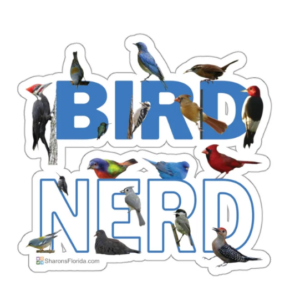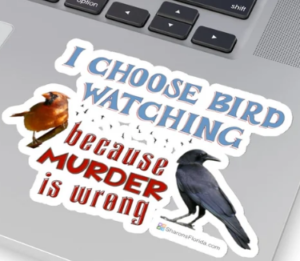Wild Turkey
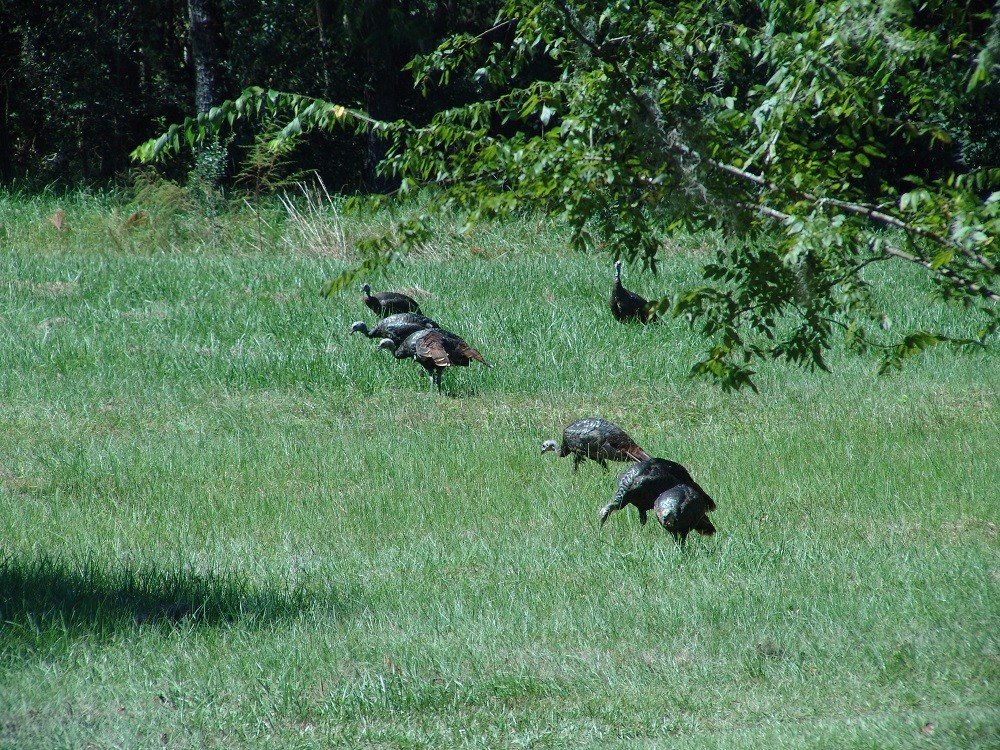
The wild turkey, Meleagris gallopavo, is in the Phasianidae family along with partridges and grouse.
The wild turkey has a bluish head, that is naked except for the wartlike caruncles, a bulbous dewlap on the neck and bronze colored plumage with rust colored tail tips. The fleshy appendage that protrudes from the top of the bill is called a snood. The males (toms or gobblers) have bristlelike feathers (their beard) that dangle from their breasts, and sharp spurs that project from the back of each leg. Females (hens) are smaller than males, with a smaller snood and only occasionally a beard. A turkey’s weight may reach twenty-five pounds and its length to 50 inches. Most turkeys only live to be around two years old, but a bird may occasionally survive to ten years.
An adult turkey’s diet consists almost entirely of plants such as leaves, buds, flowers, seeds, tubers, and fruits; however, they do consume insects, frogs and lizards. They relish blueberries, dogwood fruits, wild grapes, blackberries and sumac seeds. Forest herbs, such as fiddleheads and violets provide spring forage. In the summer grasses, sedges, leaves, and seeds become abundant and are eaten extensively. In the winter they feed on residual fruits, evergreen fern leaflets, the dried spore stalks of sensitive fern, and clubmoss spores. Oak acorns are a staple food item year round.
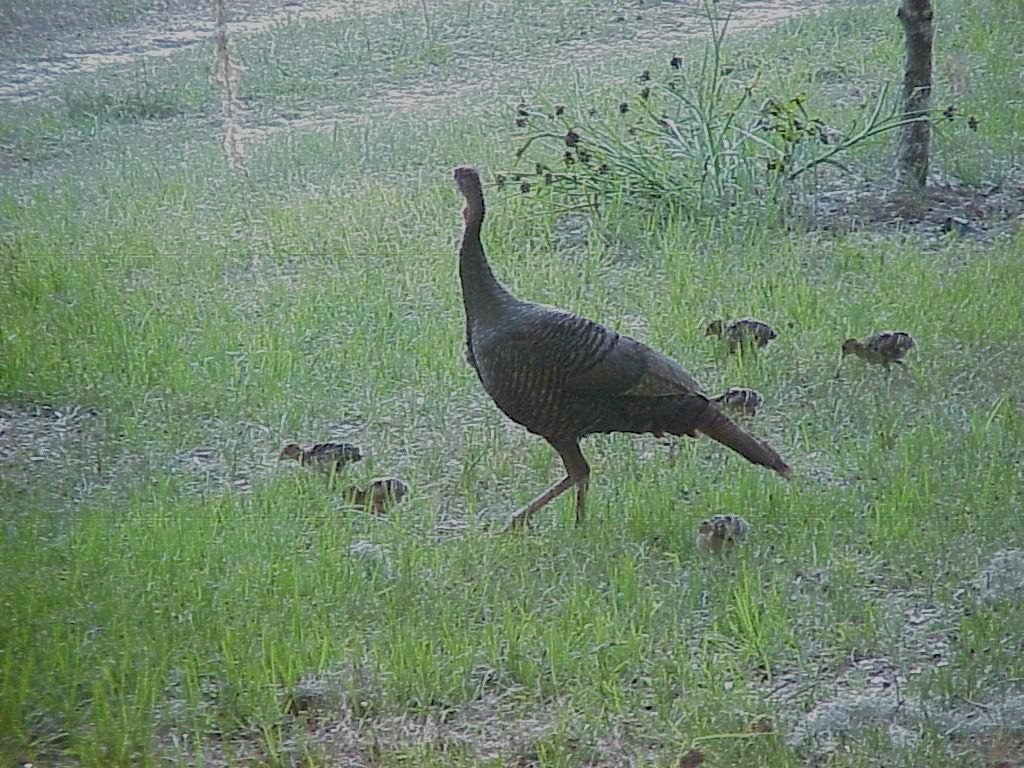
Wild turkeys stay in flocks and favor mature deciduous and mixed woodlands. However their preferences, as well as flock structure, change with the seasons.
In the spring the flocks break up into smaller groups of the same sex, and tend to favor forest edges and openings. One male generally dominates the male groups, although solitary males may also be found. Mating displays are the preoccupation of mature males during the spring. He draws attention to himself by gobbling and strutting with erect plumage and tail, dragging his wings and uttering low-pitched ‘chumps’ or hums, known as the ‘pulmonic puff’. His displays also include coloration changes of the head and neck. The coloration of which may change from red to blue to white. Males mate with as many females as they can attract (they are polygamous).
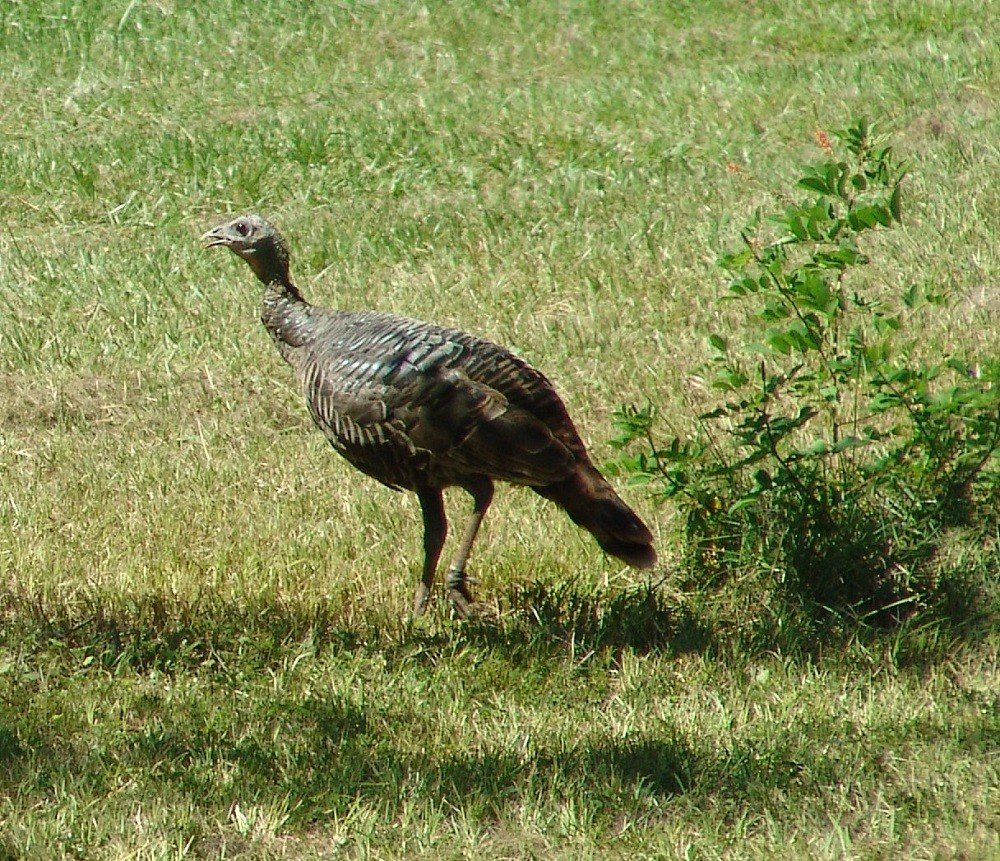
After mating the female goes off by herself to nest. Her nest is a shallow depression scratched out in the ground under a shrub or the low branches of a tree. In it she lays 6-20 eggs, which are buff colored and dotted with reddish-brown. Each time she leaves the nest, before incubation begins, she covers the eggs with leaves. Incubation takes about 28 days. If she is disturbed during incubation she will abandon her nest and may re-nest in another area. Soon after hatching the female leads the hatchlings (poults) away from the nest and cares for them (broods) on the ground. Turkey poults are precocial, and have the ability to fend for themselves immediately after hatching. The poults forage with their mother consuming high amounts of insects, especially grasshoppers and spiders. The poults begin flying and roosting in the trees in about two weeks.
Summer flocks still frequent forest edges and openings, and break down into three types. Family flocks, that consist of brood hens and their poults, adult broodless hen flocks, and male flocks that have rejoined. Family flocks may merge to form flocks if thirty or more birds, and may have a forage area of several hundred acres. Broodless hens may also join the family flocks.
Flocks withdraw deeper into the woods during the fall. At this time the poults begin to reach adult size and another breakdown of the flocks takes place. The immature males (jakes) form bachelor flocks, and the immature females (janes) stay with, or move into, family flocks. Each flock has a hierarchy with the dominant bird being superior and the others occupying a rank beneath it. Jakes and janes go through their first molt to acquire their adult plumage.
In the winter the flocks withdraw into sheltered areas like pine stands, and wooded creek bottoms. The birds tend to be fairly sedentary. If the weather becomes severe, they may roost without feeding for a week or more.

